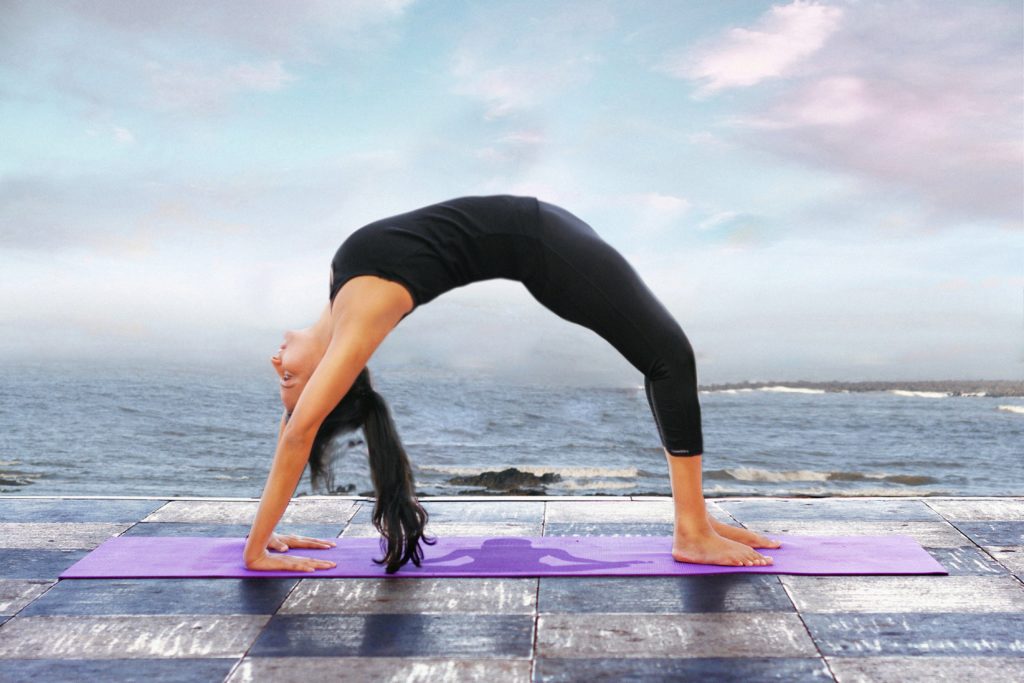
1. Paschimottanasana (Forward bend) on chair
– Sit on the edge of the chair. Keeping your legs straight, curl your toes in so that it is pointing towards the ceiling.
– Raise the arms and stretch them up to extend your spine and lift your chest
– Move the chest forward and while maintaining a concave back, move the arms forwards. Catch the big toes if possible. If not, place your palms on your legs as farther as you can while keeping the back concave.
– Hold the pose for 4-5 breaths and release

2. Ardha matsyendrasana (Half spinal Twist) on chair
– Sit comfortably on chair keeping back straight. Ensure your feet is firmly resting on the floor
– Catch the back rest of the chair with your left arm. Raise the right arm up. Bring your right arm around the outside of your left leg. Turn your chest, head and eyes to the left. Pull with the left arm to allow the chest to turn farther. Use the right arm to push the spine farther into the twist.
– Hold the pose for 30 seconds. Release and repeat on the other side.

3. Bhujangasana (Cobra pose) on chair
– Sit comfortably on chair keeping back straight. Ensure your feet is firmly resting on the floor
– Hold the back of the chair taking the arms behind you
– Raise the chest and shoulders to look up
– Hold the pose for 5-6 breaths and release
IMAGE CREDIT- GETTY












